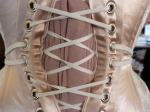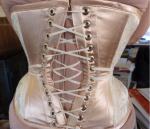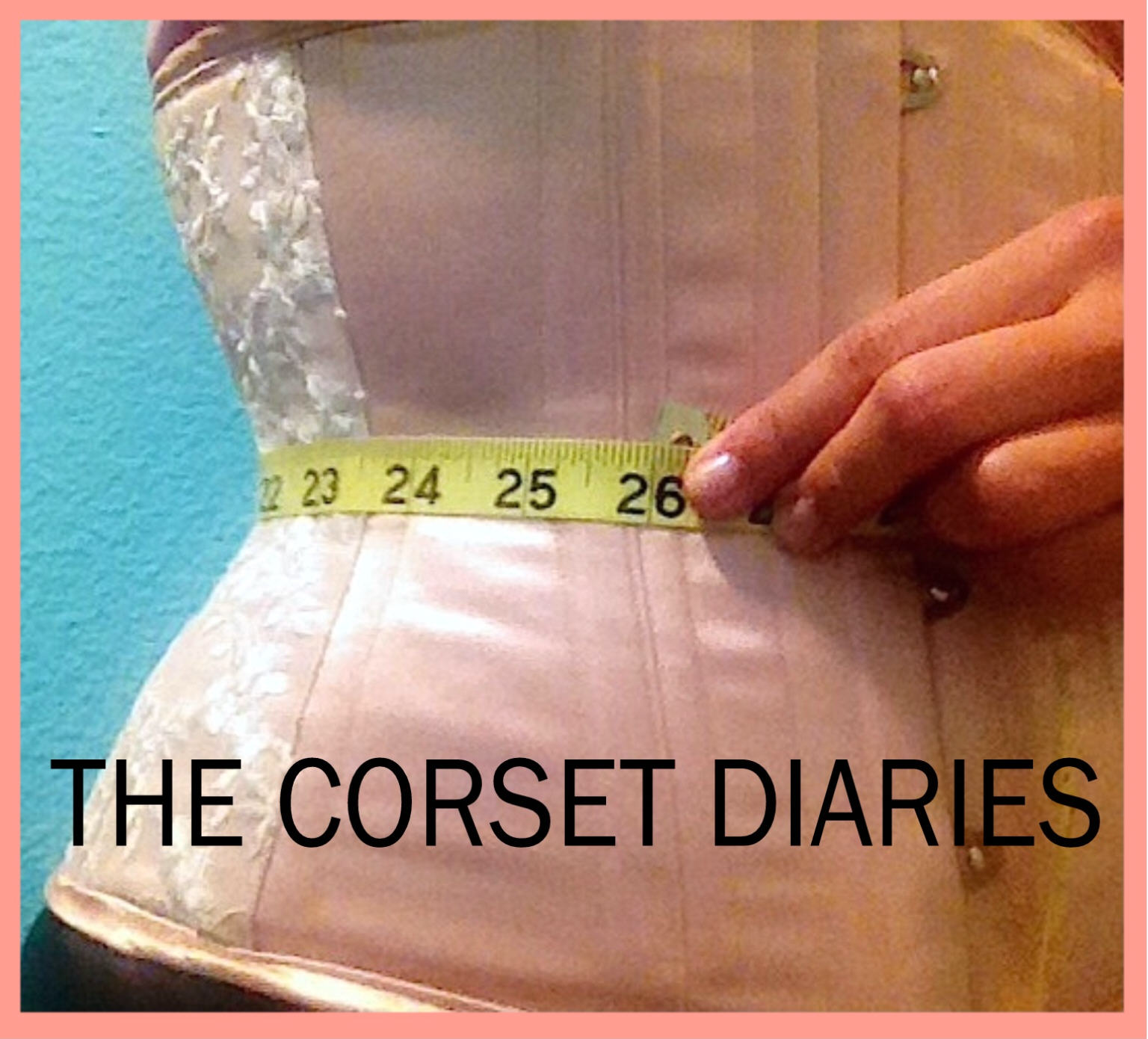Just how much waistline restriction to order in a new corset presents a challenge to be sure! What I’m talking about is, how many inches or half-inches below your snug natural waist size, should the corset close down to once you get it entirely laced closed top to bottom?
Without doubt parts of that answer have to do with your experience in corseting, how much discomfort you can bear, your waist measurement, the style of the corset and more. However, based on 23 years in this speciality business fitting custom corsetry on most likely over 8000 clients more or less, some wonder why it is that there is no precise answer as to how tightly they can ultimately lace in a corset they have ordered?
There’s simply no easy answer and the ubiqutous “four inches” you read about on many websites is not even a good “rule of thumb”–not even for corset newbies. It’s far better to discuss your needs with a knowledgeable corsetiere or educator who will take your individual situation, measurements, and goals into consideration in coming up with advice.
If I advise too much restriction when the corset closes down in back after a period of seasoning and getting used to wearing it, then the problem seen below will or may likely result: bowing out at the waistline of the boning in the center back. Ouch! I’ve even made that mistake in one of my personal corsets, a favored pink broche corset by Ruth Johnson, still one of my treasures! Sadly I chose to wear that one when brand new, to a Bridal Faire where ROMANTASY had a display. Since I had to staff the booth all day and could not leave to change corsets or clothes, I had to bear up as those pesky bones torqued and began a day of digging in. I had not practiced enough, I had chosen a corset with too much of a back gap, I had eaten too much breakfast, I had plumped up in the recent past — whatever reason it was and even tho I was an experienced corset wearer, I had a huge problem! It was a sad lesson learned.
 Recently a client who is a tight lacer and received a sterling, well-made new corset, wrote about the same problem, pictured here. When I told her about my own experience and suggested this might be the cause of the problem, she replied:
Recently a client who is a tight lacer and received a sterling, well-made new corset, wrote about the same problem, pictured here. When I told her about my own experience and suggested this might be the cause of the problem, she replied:
 Of course she was right. I had had a similar client, absolutely sure that he could tolerate five inches when laced closed in back of his new corset, who once he put on and wore his corset for a few times, called me in evident and great distress. He was convinced that I had mis-advised him and he excoriated me roundly. Perhaps I should have put my foot down when he ordered, but I didn’t in face of his protests. At least he couldn’t say I hadn’t warned him, since at that time of order, I had advised a maximum close of four inches.
Of course she was right. I had had a similar client, absolutely sure that he could tolerate five inches when laced closed in back of his new corset, who once he put on and wore his corset for a few times, called me in evident and great distress. He was convinced that I had mis-advised him and he excoriated me roundly. Perhaps I should have put my foot down when he ordered, but I didn’t in face of his protests. At least he couldn’t say I hadn’t warned him, since at that time of order, I had advised a maximum close of four inches.




